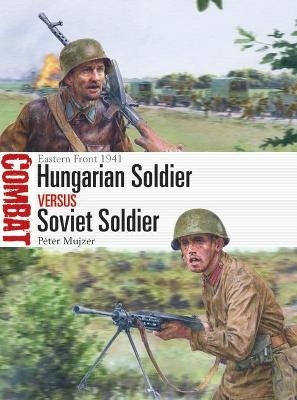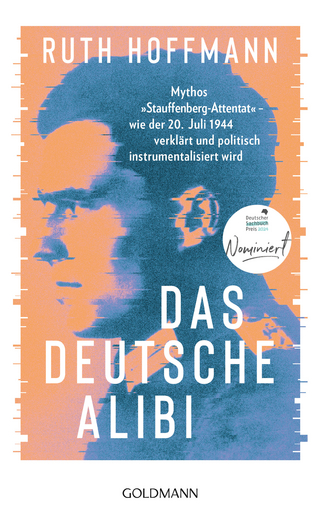
Hungarian Soldier vs Soviet Soldier
Eastern Front 1941
Seiten
2021
Osprey Publishing (Verlag)
978-1-4728-4565-8 (ISBN)
Osprey Publishing (Verlag)
978-1-4728-4565-8 (ISBN)
On 26 June 1941, unidentified bombers attacked the Hungarian town of Kassa, prompting Hungary to join its Axis partners in Operation Barbarossa, Hitler’s invasion of the Soviet Union. Hungary’s contribution to Barbarossa was designated the Carpathian Group, its most powerful component being the Mobile Corps, which fielded motorized rifle, cavalry, bicycle and light armoured troops. The Hungarians faced Soviet forces belonging to the Kiev Military District, deployed in four armies along a 940km-long front.
On the defeated side in World War I, Hungary had seen its borders redrawn and its armed forces constrained by treaty, but was determined to recover territories lost to adjoining countries. When Hungary decided to participate in Operation Barbarossa, however, the Royal Hungarian Army was deployed in the Soviet Union and not against its neighbours. Meanwhile, the Red Army, while remaining among the most formidable armies of the era, had been seriously weakened by successive purges, its shortcomings exposed by the Winter War against Finland in 1939–40.
During the opening battles (4–13 July), the Hungarian motorized rifle and armoured units clashed with the withdrawing Red Army forces. In the battle for Uman (15 July–8 August) the Hungarians blocked the Soviet troops' efforts to break out from encirclement. During the Hungarian defensive operation at the River Dniepr (30 August–6 October), counter-attacking Soviet units exerted heavy pressure on the defending Hungarians. Both sides would seek to draw lessons from these opening battles as the war in the East continued to rage into 1942. Fully illustrated, this book investigates the Hungarian and Soviet soldiers who fought in three battles of the Barbarossa campaign, casting new light on the role played by the forces of Nazi Germany’s allies on the Eastern Front.
On the defeated side in World War I, Hungary had seen its borders redrawn and its armed forces constrained by treaty, but was determined to recover territories lost to adjoining countries. When Hungary decided to participate in Operation Barbarossa, however, the Royal Hungarian Army was deployed in the Soviet Union and not against its neighbours. Meanwhile, the Red Army, while remaining among the most formidable armies of the era, had been seriously weakened by successive purges, its shortcomings exposed by the Winter War against Finland in 1939–40.
During the opening battles (4–13 July), the Hungarian motorized rifle and armoured units clashed with the withdrawing Red Army forces. In the battle for Uman (15 July–8 August) the Hungarians blocked the Soviet troops' efforts to break out from encirclement. During the Hungarian defensive operation at the River Dniepr (30 August–6 October), counter-attacking Soviet units exerted heavy pressure on the defending Hungarians. Both sides would seek to draw lessons from these opening battles as the war in the East continued to rage into 1942. Fully illustrated, this book investigates the Hungarian and Soviet soldiers who fought in three battles of the Barbarossa campaign, casting new light on the role played by the forces of Nazi Germany’s allies on the Eastern Front.
Péter Mujzer served in the Hungarian armed forces for 20 years and is now a military historian with a particular interest in Hungary’s armed forces during World War II. He is the author of five previous books, plus more than fifty articles on associated topics, many in English. This is his first book for Osprey. Steve Noon was born in Kent, UK, and attended art college in Cornwall. He’s had a life-long passion for illustration, and since 1985 has worked as a professional artist, illustrating over 40 books for Osprey.
Introduction
The Opposing Sides
Openaing Battles, 1-14 July 1941
Golovanevsk, 6 August 1941
Zaporozh'ye, 1-6 September 1941
Analysis
Aftermath
Unit Organizations
Bibliography
Index
| Erscheinungsdatum | 23.07.2021 |
|---|---|
| Reihe/Serie | Combat |
| Illustrationen | Steve Noon |
| Sprache | englisch |
| Maße | 184 x 248 mm |
| Gewicht | 264 g |
| Themenwelt | Sachbuch/Ratgeber ► Geschichte / Politik ► Allgemeines / Lexika |
| Geschichte ► Allgemeine Geschichte ► 1918 bis 1945 | |
| Geschichte ► Teilgebiete der Geschichte ► Militärgeschichte | |
| Sozialwissenschaften ► Politik / Verwaltung | |
| ISBN-10 | 1-4728-4565-X / 147284565X |
| ISBN-13 | 978-1-4728-4565-8 / 9781472845658 |
| Zustand | Neuware |
| Haben Sie eine Frage zum Produkt? |
Mehr entdecken
aus dem Bereich
aus dem Bereich
ein Psychologe erlebt das Konzentrationslager
Buch | Hardcover (2024)
Kösel (Verlag)
22,00 €
Mythos „Stauffenberg-Attentat“ – wie der 20. Juli 1944 verklärt und …
Buch | Hardcover (2024)
Goldmann (Verlag)
24,00 €


